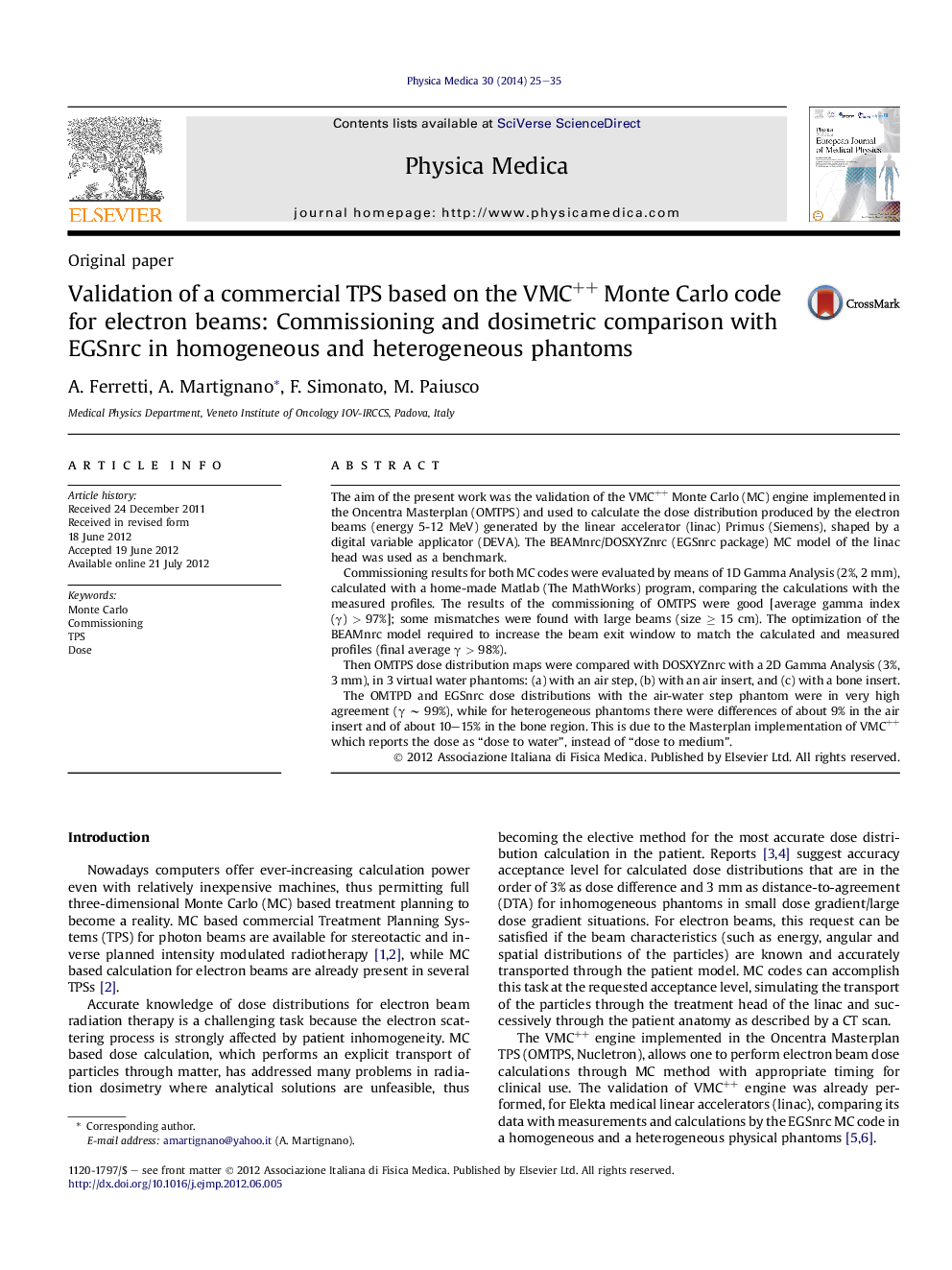| Article ID | Journal | Published Year | Pages | File Type |
|---|---|---|---|---|
| 1882496 | Physica Medica | 2014 | 11 Pages |
The aim of the present work was the validation of the VMC++ Monte Carlo (MC) engine implemented in the Oncentra Masterplan (OMTPS) and used to calculate the dose distribution produced by the electron beams (energy 5-12 MeV) generated by the linear accelerator (linac) Primus (Siemens), shaped by a digital variable applicator (DEVA). The BEAMnrc/DOSXYZnrc (EGSnrc package) MC model of the linac head was used as a benchmark.Commissioning results for both MC codes were evaluated by means of 1D Gamma Analysis (2%, 2 mm), calculated with a home-made Matlab (The MathWorks) program, comparing the calculations with the measured profiles. The results of the commissioning of OMTPS were good [average gamma index (γ) > 97%]; some mismatches were found with large beams (size ≥ 15 cm). The optimization of the BEAMnrc model required to increase the beam exit window to match the calculated and measured profiles (final average γ > 98%).Then OMTPS dose distribution maps were compared with DOSXYZnrc with a 2D Gamma Analysis (3%, 3 mm), in 3 virtual water phantoms: (a) with an air step, (b) with an air insert, and (c) with a bone insert.The OMTPD and EGSnrc dose distributions with the air-water step phantom were in very high agreement (γ ∼ 99%), while for heterogeneous phantoms there were differences of about 9% in the air insert and of about 10–15% in the bone region. This is due to the Masterplan implementation of VMC++ which reports the dose as “dose to water”, instead of “dose to medium”.
